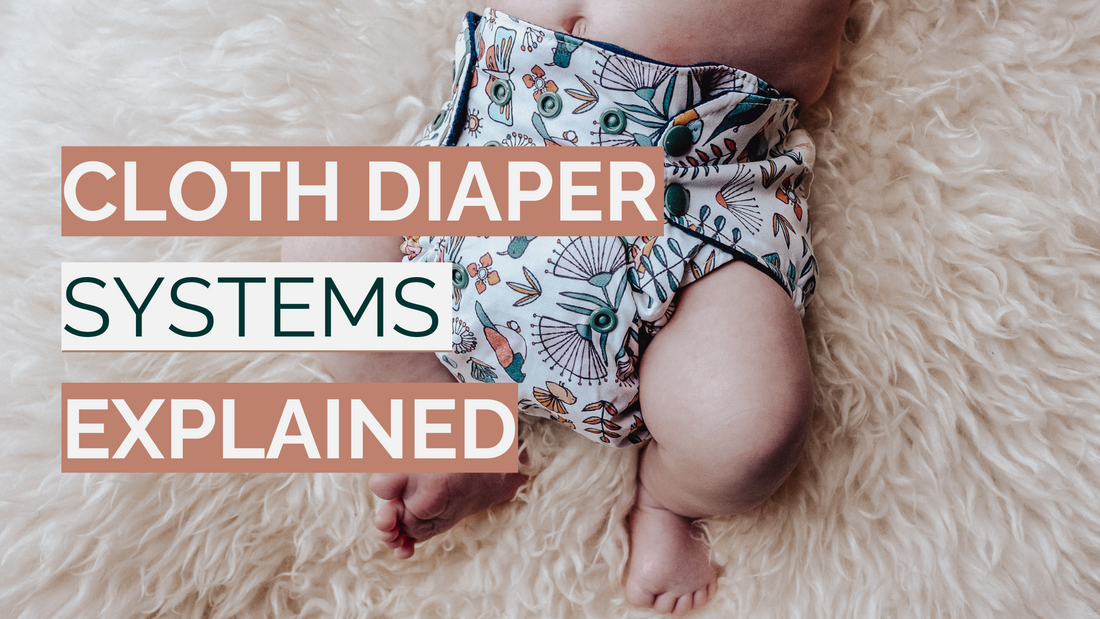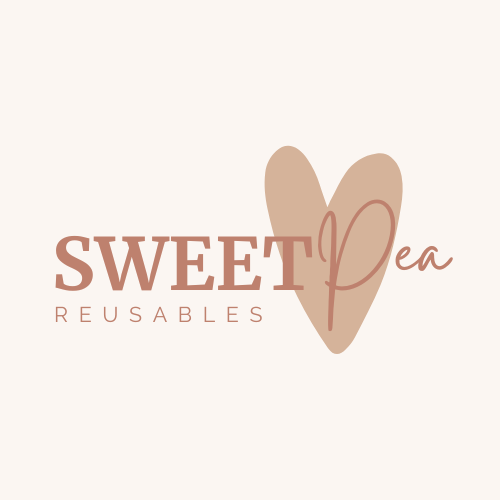A Comprehensive Guide on Cloth Diaper Systems (with a Woolly Twist!)

Share
I don't want to see you getting overwhelmed by all the info swirling around on the internet about cloth diapers (Lots of them are outdated Myths). This guide will break down the most common types of cloth diapers, highlighting the unique benefits of wool and helping you find the perfect fit for YOU.
If you want to make the switch to reusable diapers, it's going to work for you!
Let's begin:
1. Flats:

- What they are: Simple, single layers of fabric (usually cotton, muslin, bamboo, with or without stretch) that need to be folded and secured, and require a separate cover.
- Pros: Most affordable, quick-drying, customizable, fit for long.
- Cons: Steepest learning curve
- Best for: Budget-conscious parents, and those who like a hands-on approach. Great paired with a wool cover for a natural system!
2. Prefolds:
- Multiple layers of fabric sewn together, semi-folded and secured. Require a separate cover.
- Pros: Can be pad folded, and used in almost every diaper (pocket, wool, AI2's) so the investment will be useful for a long time even after the child has outgrown it.
- Cons: Requires sizes to buy, can be bulky.
- Best for: A good middle ground for those wanting affordability and ease. Sweet Peas Wool Diapers accommodate prefolds easily.
3. Fitteds:

- What they are: Shaped like a disposable diaper, elasticized legs and back require a cover. Available with or without Snaps to close (Snappy or Nappy Pin required otherwise)
- Pros: Easy to use, good containment.
- Cons: More expensive if you want many.
- Best for: Parents seeking convenience. Fitteds work beautifully at night time, you can add absorbency in and outside. Pair with wool covers for a super absorbent and comfortable combination at night.
4. Pocket Diapers:

- What they are: Waterproof outer with a stay-dry inner, creating a pocket for an absorbent insert (or two).
- Pros: Easy to use, customizable absorbency. Many brands to choose.
- Cons: Mid-to-high-range price. Stuffing inserts. It can take very long to dry 5-layer+ inserts, you may need a dryer. Every part needs to be washed after one use. Child is still wrapped in Polyester.
- Best for: Those wanting ease and adjustable absorbency. Many prefer PUL pocket diapers due to the stay-dry layer from the pocket itself. The most commonly used cloth diaper system on the market.
5. All-in-Ones (AIOs):
- What they are: Absorbent layer sewn directly into a waterproof outer.
- Pros: Easiest to use.
- Cons: Most expensive, longer drying time, can't easily bleach or sanitize them because the absorbent part and the waterproof PUL are non-separable. Not many brands produce them anymore.
- Best for: Convenience-focused parents.
6. All-in-Twos (AI2s):

- What they are: Similar to AIOs, but the insert snaps or lays into the cover. Can be a PUL or Wool Cover
- Pros: Easier drying than AIOs, customizable absorbency. Cost-effective because you can reuse the cover and just change the absorbent part
- Cons: Requires some assembly.
- Best for: Those wanting convenience and quicker drying. Sweet Pea wool Diapers are an AI2 system, offering flexibility and naturality.
7. Wool Covers: The Star of the Show!
- What they are: Naturally water-resistant covers made from wool.
- Pros: Breathable, naturally antibacterial, can be used multiple times before washing up to 6 weeks (unless soiled), eco-friendly, temperature regulating (keeps baby cool in summer and warm in winter). You decide what absorbency to put underneath.
- Cons: Requires lanolizing, more expensive upfront (but saves money in the long run!), need to wash wool and absorbent part in separate cycles.
- Best for: Parents seeking a natural, sustainable, and incredibly comfortable option for their baby. Perfect for any diaper system but especially beneficial when paired with absorbent inners like flats, prefolds, preflats or fitteds.

Why You Should Love Wool:
Wool is a natural wonder! It's breathable, allowing air to circulate and preventing rashes. It's also temperature-regulating, keeping your baby comfortable year-round. Plus, it's naturally antibacterial, so it stays fresher longer. While it requires a little special care (lanolizing), the benefits for your baby's skin and the environment are undeniable.
Many people associate wool diapers with bulky knits. I wanted to reimagine wool diapering, creating something more practical and versatile. My Sweet Pea Wool Diapers are designed for practicality, whether your child is crawling, cruising, or even digging in the sand.
They're the perfect blend of natural materials and modern design. And did I mention they grow with your child, making them a great value.
Which System is Right for You? (Especially with Wool!)
The best system depends on your needs. Make a pro and con list and refer to your lifestyle. But if you're looking for the most natural, breathable, and comfortable option for your baby, wool covers are a fantastic choice! They work seamlessly with a variety of absorbent inners.
